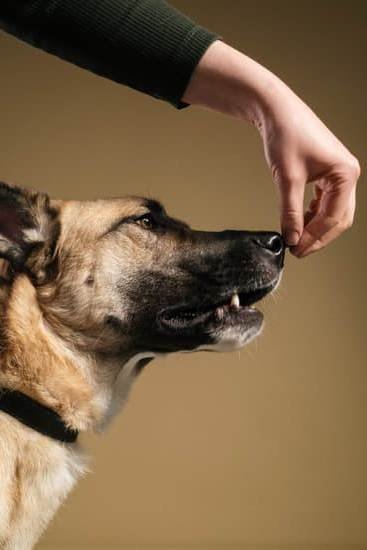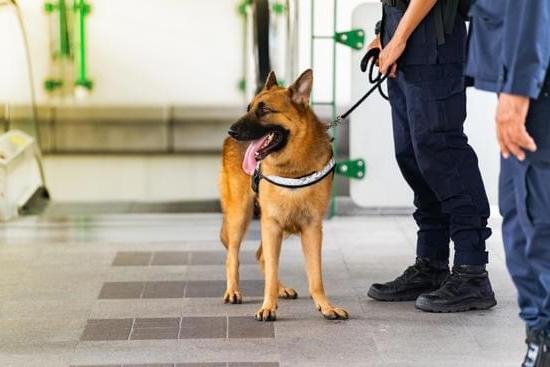A crate is a great way to train your dog to stay in one area. If you use a crate correctly, your dog will come to see it as a safe and comfortable place to be.
The best way to train your dog to go in a crate is to start when he is a puppy. Put the crate in a room where your dog spends a lot of time, and put some of his toys and bedding in there. Feed him his meals in the crate, and when he goes to the bathroom, praise him and give him a treat.
Once your dog is comfortable going in the crate, you can start using it to train him to stay in one area. Whenever you want your dog to stay in the crate, put him in there and close the door. If he starts to whine or bark, wait until he is quiet before letting him out.
If you are using a crate to train your dog to stay in one area, it is important to be consistent. Always put your dog in the crate when you want him to stay in one area, and never use the crate as a punishment.
How Long Do You Crate Train A Dog
?
The answer to this question depends on the individual dog and what his or her needs are. Some dogs only need to be crated for a short time after being potty trained, while others may need to be crated for much longer periods of time.
Generally speaking, crate training should continue until the dog no longer needs to be crated. This may mean crating the dog for a few hours during the day and overnight, or it may mean crating the dog for a few days or weeks.
If you are not sure how long to crate train your dog, it is best to ask your veterinarian or a qualified dog trainer.
How To Crate Train An Older Dog
So, you’ve decided to crate train your older dog. Good for you! Crating can be a hugely beneficial tool for house training, preventing destructive behavior, and keeping your dog safe and secure when you can’t be home. But, how do you go about crate training an older dog?
The first step is to choose the right crate. Choose a crate that is big enough for your dog to stand up and turn around in, but not so big that he can easily potty in one corner and sleep in the other.
Once you’ve got your crate, the next step is to get your dog used to it. Start by putting the crate in a quiet, low-traffic area of your home. Leave the door open and let your dog explore at his own pace. Once he’s comfortable going in and out of the crate, begin feeding him his meals inside the crate. Once he’s eating his meals inside the crate, start closing the door for short periods of time. slowly increase the amount of time he spends in the crate with the door closed.
If your dog is having a hard time adjusting to the crate, try putting a favorite toy or treat in the crate to entice him inside. And, be sure to praise your dog when he goes into the crate on his own.
The key to successful crate training is patience and persistence. It may take a little while for your older dog to get used to the crate, but with patience and positive reinforcement, you can have a happy, well-adjusted dog who loves his crate.
How Old Is Too Old To Crate Train A Dog
?
There is no definitive answer to this question since it varies from dog to dog. However, a good rule of thumb is to start crating your dog when he or she is about 6 months old. This allows your dog to get used to the crate gradually and prevents him or her from associating the crate with punishment.
Why Crate Train A Dog
There are many reasons to crate train a dog. A crate can provide a safe place for a dog to rest and relax, it can be a place for a dog to go to when he or she needs time to calm down, and it can be a place for a dog to go when he or she needs to be isolated from other people and animals.
But the most important reason to crate train a dog is because it can help to housetrain the dog. Dogs naturally do not like to soil their living space, and a crate can provide that space. When a dog is first being housetrained, he or she should be crated for short periods of time, gradually increasing the amount of time the dog spends in the crate. This will help the dog to learn that the crate is his or her bathroom, and that he or she should only relieve him or herself outside.
Crate training can also be helpful for dogs who have a tendency to chew on things. A crate can provide a safe place for a dog to chew on toys or bones, and it can help to prevent the dog from chewing on furniture, carpets, and other things that he or she is not supposed to chew on.
If you are thinking about crate training your dog, it is important to choose the right size crate. The crate should be big enough for the dog to stand up, turn around, and lie down in, but it should not be too big, as the dog will not feel as though it is his or her own space if the crate is too large.
It is also important to make sure that the crate is comfortable for the dog. You can do this by putting a soft blanket or towel in the crate, and by making sure that the crate is in a quiet, safe place where the dog will not be disturbed.
If you are crate training your dog, be sure to praise him or her when he or she does something good, and be sure to give the dog plenty of exercise and plenty of opportunities to relieve him or herself outside.

Welcome to the blog! I am a professional dog trainer and have been working with dogs for many years. In this blog, I will be discussing various topics related to dog training, including tips, tricks, and advice. I hope you find this information helpful and informative. Thanks for reading!





